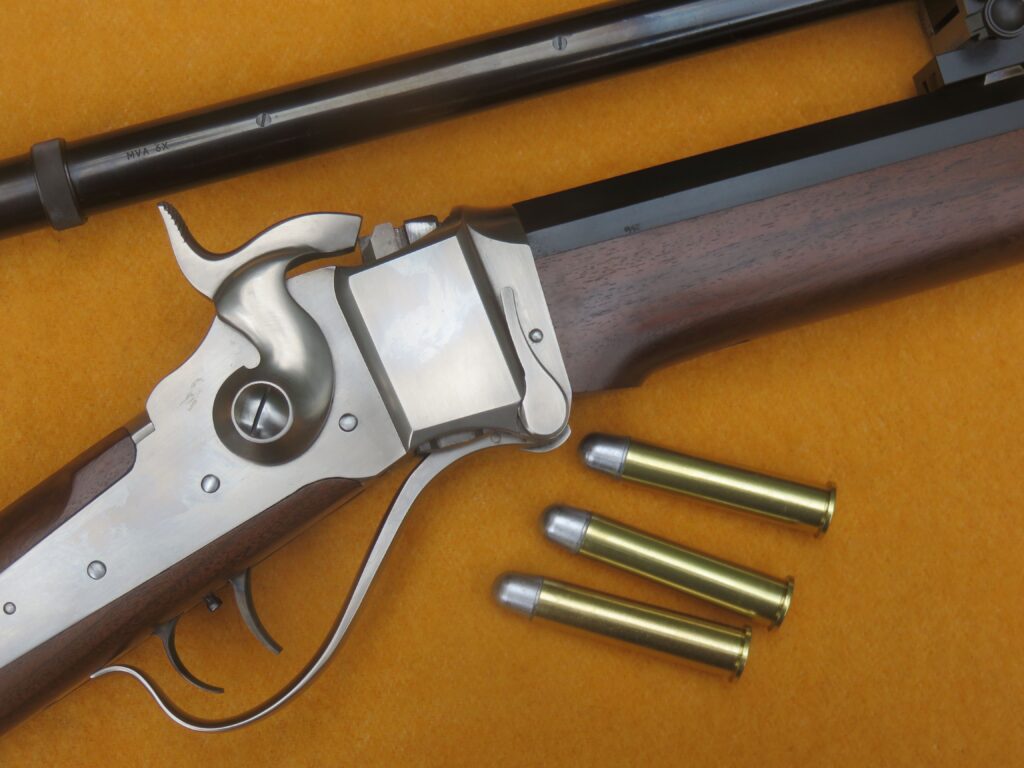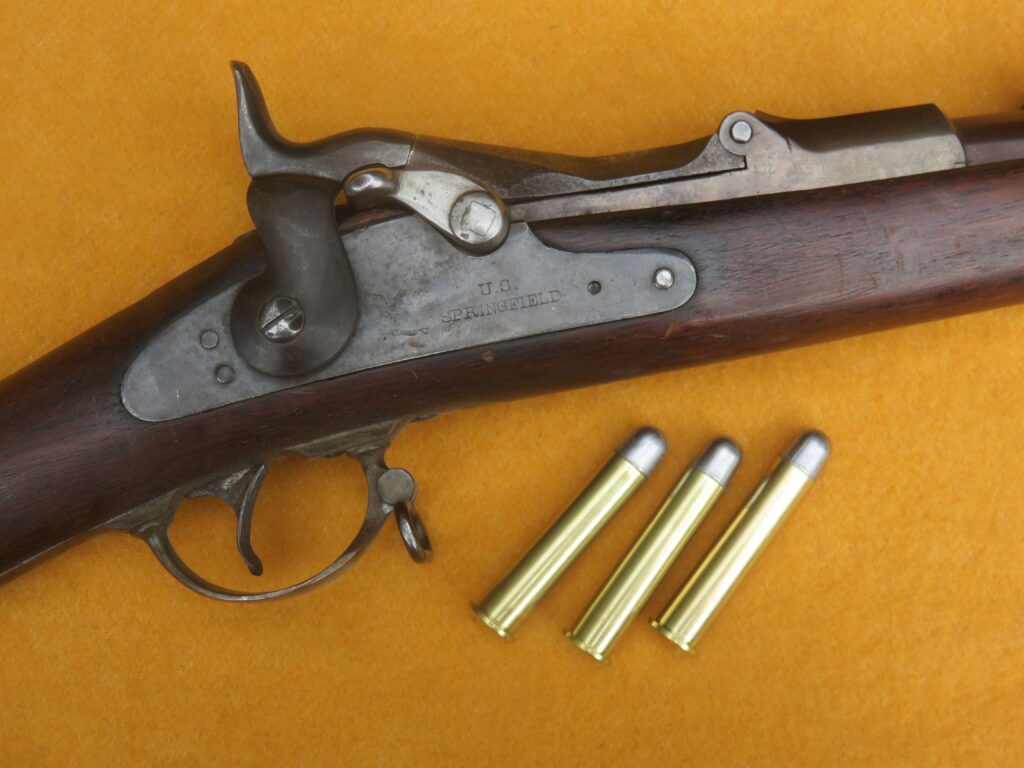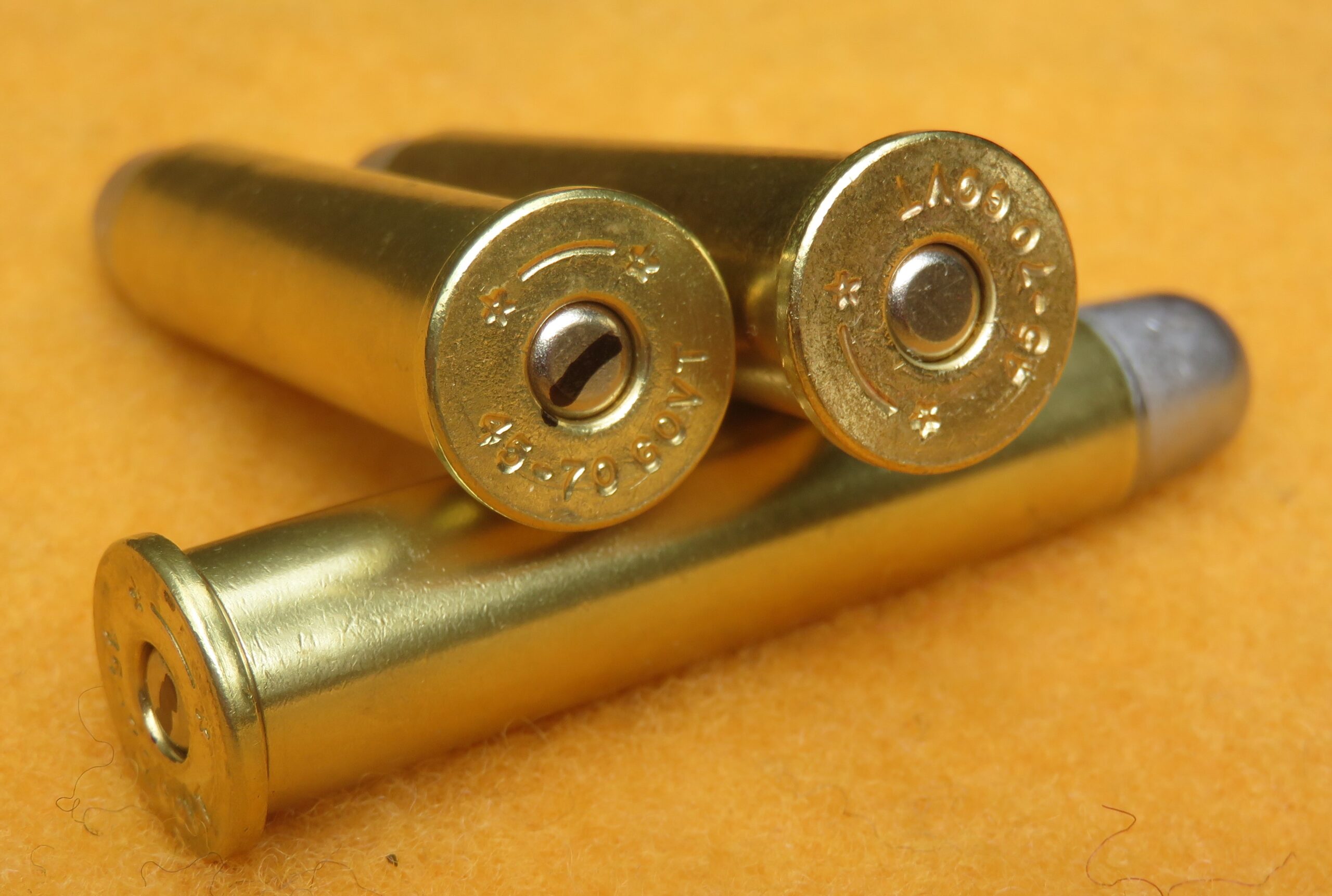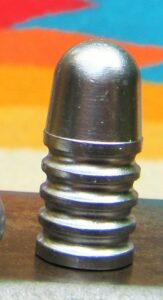
By Mike Nesbitt | Contributing Editor
First Sergeant John Ryan was in Company M, 7th Cavalry, commanded by Captain Thomas French, under battalion commander Major Marcus Reno at the Battle of the Little Big Horn.
In that battle, Ryan distinguished himself when his company was taking fire from one of the Sioux or Cheyenne warriors who was shooting at them from Sharpshooter Ridge, using a rifle, presumably captured, that had long range capabilities. The troopers’ .45/70 carbines, using the standard carbine loads with 55 grains of powder, were ineffective at the 400-plus yards from whence the incoming fire was originating. Captain French asked Sgt. Ryan if he could do something about it.
Ryan had a heavy barreled Sharps in .45/70 with a full-length scope. That was a rifle he “had built” (to use his own words) in Bismarck a little while before the 7th Cavalry departed Fort Lincoln heading toward the Little Big Horn. Ryan gives too little in detail about this gun but we are blessed by what he did include in his reports about his military career which ended shortly after the famous battle in 1876. He does mention that he would trade his carbine ammunition with members of the infantry who had the .45/70s which used the rifle loads. We can easily guess that Ryan had some of those rifle loads with him at the Battle of the Little Big Horn along with having that heavy Sharps.

After Captain French asked Ryan to “do something about it,” Ryan fired a couple of shots in order to find the range. Then, after adjusting his rifle’s scope for the distance, he fired a few rapid shots into the point where the incoming was originating. That ended the sniping being done from Sharpshooter Ridge. One report I read indicated that blood was found in that spot after the battle, which would give evidence that the shooter was hit and wounded, perhaps killed. Ryan did state that when the shooting from Sharpshooter Ridge was stopped, the men in his Company gave a roaring cheer. (I think we all would have cheered!)
Shortly after that, the troopers could see the Indians taking down their tepees while preparing to leave, to get out of the area. Sergeant Ryan and Captain French fired a few shots in the direction of the Indian camp with their long-range rifles. Captain French had an 1870 Springfield rifle in .50/70 caliber and more than once he had .45/70 carbines passed to him with cartridge cases jammed in their chambers. French could knock the stuck cases out with his rifle’s ramrod, which, at that time, the .45/70 carbines were not equipped with. Those shots fired by French and Ryan toward the Indian camp were the last shots fired at the Little Big Horn battle.
Giving that background about Sgt. Ryan was necessary for this story because C. Sharps Arms is making a replica of Ryan’s famous but somewhat mysterious rifle. It will be a .45/70 with a heavy (I’m suggesting a #2 Heavy barrel) 30-inch-long barrel equipped with a full-length scope by MVA (Montana Vintage Arms). This rifle will weigh about 15 pounds prior to having the scope mounted. I say that Ryan’s rifle is “somewhat mysterious” because we don’t have a picture of it and our only good clues to what the rifle looked like come from Ryan’s description. That is; he had the rifle built at a gun shop in Bismarck at a cost of $100 and that the rifle weighed 15 pounds. (Ryan said the gun weighed 17 pounds in the book “Ten Years with Custer” but in a later manuscript the weight was “reduced” to 15 pounds.)
Some assumptions become necessary about this gun. Having it “built in Bismarck” strongly suggests that a used Sharps rifle was re-barreled and perhaps given a new forearm. If, however, the rifle already had a heavy barrel, then a new forearm wouldn’t have been needed. Having the barrel made and installed plus getting the full-length scope and having it mounted could have certainly cost the $100 that Ryan speaks of for the rifle and work. It is the idea that Ryan had a used Sharps re-barreled which suggests that his gun had the Hartford feature of the silver nose cap on the forearm.
The replica of Sgt. Ryan’s rifle isn’t completed as yet but I’m honored that I get the chance to try the rifle at some distant targets while at the Quigley Buffalo Rifle Match in a couple of months. The targets I expect to shoot at are; 400, 530, and 600 yards away from the firing line. And to “get a feel” of how Ryan did his shooting, I want to use ammo that is at least something like the ammo he used back in 1876, so some “copies” of those old loads needed to be prepared. Both rifle and carbine loads were made with bullets approximating the old 405 grain slugs. (The 500 grain bullets for the military loads weren’t introduced until 1881.)

Making exact duplicates of the old military .45-70 cartridges is not the easiest to do. Those old cartridges had copper cases and Benet priming. Those features can’t be copied but for the ammo I was preparing, some features of the old cartridges were at least considered.
For cases I used new brass from Starline. Those new cases were sized, just to be sure of uniformity, and then slightly belled at the mouth. They were primed and I used Federal large pistol primers, hoping those would have closer characteristics of ignition than modern large rifle primers. Primers in the old days simply were not as “hot” as primers today. Powder was added next and the powder I selected was Swiss 1 ½ Fg. Powder for the very early .45-70 cartridges was often described as ‘musket powder’ and with that as a guideline I assume the old powders were not particularly fine in grain size.
Bullets, of course, were considered before getting that far with the loads and the bullets used were cast from Lyman’s #457124 mold. That is a very close copy of the old original bullet and for this set of loads those were sized to .457” diameter and lubricated with BPC Lube from C. Sharps Arms. The early bullets were either pure lead or a very soft lead while the bullets I cast and used were made with a 25-1 lead-tin alloy. While I hope that is close enough, I can say that the old bullets were listed as 405 grains while the bullets I used weighed closer to 390 grains. That weight difference could primarily be a result from the alloy being used.

Loading those bullets took some technique. The carbine loads were the easiest because those were charged with only 55 grains of powder. Over the powder an .060” vegetable fiber wad was placed and then the bullets were seated down to the depth needed to have all of the lube grooves below the mouth of the case. That was done while very slightly compressing the powder charge simply by seating the bullets. Then the loaded rounds were run through a Lyman taper crimp die which finished the job. The carbine loads received a black line on the back of the primers for quick and easy identification.
For the rifle loads, which used a full charge of 70 grains of the Swiss 1 ½ Fg powder, another step was required. The 70-grain powder charge will completely fill the case and I did my loading without using a drop tube. Over the powder, a thinner wad was used, one that was punched from a milk carton, which saved a tiny little bit of compression. With the milk carton wad in place, the charged cases were run though the expander die again in order to compress the powder. The depth of compression was checked to make sure there was enough room for the bullet over the wad. Then the bullets were seated, with a seating die, and an increase in seating pressure could be felt a the very last bit of seating which assured me that the bullets were down on top of the wad. Then those loads were also run through the taper crimp die.
The taper crimp is much better for these loads than the more standard roll crimp which is generally found in seating dies for this and several other calibers. One reason for that is because the taper crimp can be considered more uniform, even with very slight variations in case length. Another and perhaps better reason for using the taper crimp die is because the bullets being used have no crimp groove.
Fifty rounds of each loading were prepared. Now there’s the wait of just a few weeks until Quigley when the shooting will be done. Of course, a detailed review of that shooting will be made soon after it happens. That’s when you’ll be able to know the rest of the story.




